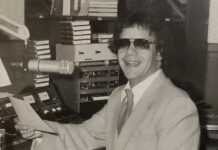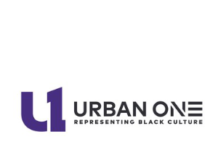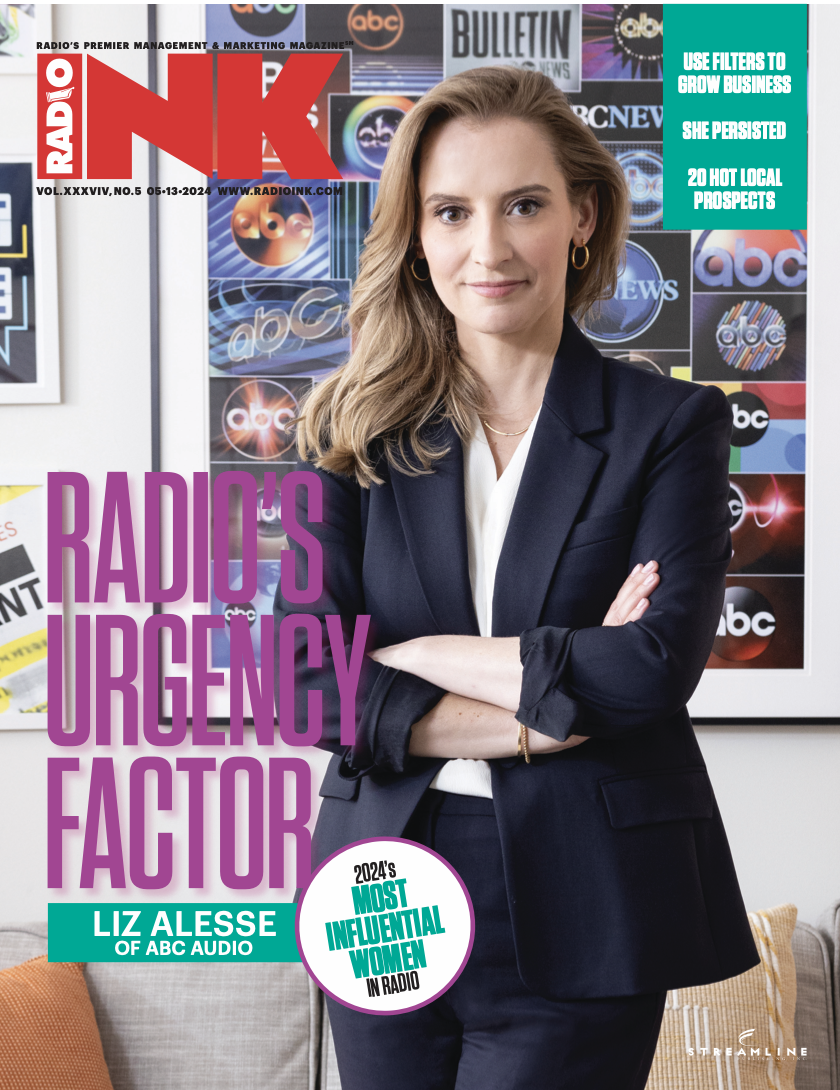
We’ve all seen the studies from within the industry that radio isn’t just thriving, it’s America’s number one mass-reach medium. But would research from outside radio find the same thing? A new study from media agency Involved Media has the answers.
Their new study looks at radio, connected audio listenership, the reach of platforms, demographic comparison, podcast cross-channel insight, and more.
Radio Ink sat down with Involved Media Director of Strategy and Research Tess Erickson to discuss the findings.
Radio Ink: Tell me about this study’s methodology and the audience you tapped into.
Tess Erickson: So we did a mostly quantitative study of 2,000 people. They were quota’d for the US Census, so a representative audience to get a better sense of what people are watching and listening to. We wanted to get into the questions that as media buyers we don’t always feel like we have the answers to.
Who are the ad listeners to these platforms versus just the listeners overall? Who’s that daily audience versus monthly audience? We’re really trying to understand how all of those audiences fit together in a way that we don’t necessarily see from surveys that aren’t focused on specifically media buyers.
Radio Ink: And you found very exciting news for radio – it was indeed the most popular audio platform among those surveyed with a 57% use rate.
Tess Erickson: Exactly. Traditional radio is still a major part of what people are listening to. I do think that because of TV and cord-cutting, people may have lumped radio into that same “traditional media” bucket, but there is a big difference. Of course, you don’t have to pay for radio so it remains really accessible. People don’t feel the need to phase it out.
We saw a lot of multiple hours a week listening instead of daily listening for radio. For short drives like that morning drop-off of your kids or maybe a quick coffee pick-up, people don’t always want to make the selection that goes into streaming audio and they like radio because they can remain passive. They know how to turn it on. It’s always where they want it to be.
Radio Ink: Obviously what radio sellers and operators want to hear. Of course, streaming also makes up a large audience chunk in your findings. How do you see traditional radio services adapting to the future of audio listening and how are they integrating new platforms into their broadcast strategies, especially for advertising?
Tess Erickson: I mean, in some ways, radio publishers were sort of first movers in this space. You think of NPR and their podcasting and that really looks a lot like a show being on NBC and then being on Hulu on-demand. We see something similar with NPR programming like This American Life and how it went from something people tuned into on their radio to something they could listen to on demand.
That’s one piece of the puzzle – creating packageable on-demand content that people go back to. But I think then the other side of things is the streaming feeds that radio stations have been able to offer. Someone who’s on the margins of your Market Service Area and doesn’t always get great service can still tune in if they are loyal. Maybe someone moved out of your market area, they can still listen.
We see that in two forms: there are the independent streams that people seek out, but then there’s also your iHeartRadio. Something interesting about iHeartRadio is that we did count it as a streaming service, but it has a slightly older demographic than other streaming services. While radio over-indexes most on 65+, what we see with iHeartRadio is it over-indexes most on 45 to 60.
Radio Ink: How did you find other demographics’ preferences for AM/FM radio? How did different groups compare when it comes to radio versus streaming audio and podcasts?
Tess Erickson: So radio does have that slightly older skew. It’s what people are used to. SiriusXM has an even older skew, but a wealthier skew to it. They’re the first movers in terms of subscription audio and they’ve stuck with that instead of switching out.
What’s super interesting is that, as a category, streaming audio is younger, but over half of the people we talked to under 35 had listened to Spotify in the last 30 days. So it actually had really similar listening levels to radio. That’s how well Spotify has done with a younger age group.
When we look at income, as I said, SiriusXM does really well with higher-income adults, but over half of Apple Music listeners make over $100,000 a year. Those people are harder for us to reach and less likely to be ad-supported audiences. Although I do want to note that over half of Apple music listeners are radio listeners, so there is still opportunity there.
We also see that streaming audio is associated with employment and especially with commuting. We saw that people who stream audio are generally more likely to commute four or five days a week rather than commute three or fewer, with the exception, interestingly, of Apple Music and Spotify. Those are two that do better with that working home crowd. So you get the people who are in maybe higher paying positions that have a little more flexibility and also younger workers that have really demanded more flexibility.
And then what we see in terms of household makeup, Apple Music does really well with families that have younger children, especially under seven years old. They like that ad-free environment. But what we see really stands out when we’re looking at families with slightly older children is Audible, it’s really popular. The parents of 7 to 17-year-olds are 70% more likely than the general population to be listening to Audible.
Interestingly, radio is least affected by parental status. In streaming, we see a real lean towards parents, but what is interesting is that people with children are slightly more likely to listen to radio than people without, but it’s not a significant difference.
Radio remains part of people’s lives, even as their lifestyles change.
Radio Ink: Audiobooks are a space that Spotify is invading right now, but it’s sort of a double-edged sword because, at the same time, they’re raising prices for the second time in a year because of the push. Will this erode the brand loyalty to Spotify? I know it’s a bit speculative, but what do you see?
Tess Erickson: No, I think that’s a super interesting question and something I was going to even bring up a little later. These services are taking a cue from the streaming video services of the world – it does seem like all of them have really put work into trying to expand what they are to their audience, which is interesting.
In the same way that we see Netflix expand into anime, live sports, and even choose your own adventure and video games, we see something similar happening from Spotify investing in video and podcasts and then audiobooks. Even Audible has gone from just an audiobook platform to also being highly focused on podcasts. It is really interesting that this is a space where each of the services is trying to become more to the people that are using it.
But what I think is more interesting is that while they’re trying to become more, they’re not necessarily trying to replace radio. So I think that that’s also the good news for radio, that the additions that Spotify has made – things like video and audiobooks – that’s not what people were going to radio for anyway. It seems more like these platforms are trying to take away each other’s audience, rather than even trying to replicate what people get from turning on the radio.
I think radio is especially able to reach people who aren’t necessarily fed into the digital media environment as much. So even if you aren’t going to do a big TV campaign, that’s where that radio audience is so powerful that it has become actually more unique as streaming audiences have become less unique.
Radio Ink: So if you were talking to a radio salesperson about the overall findings of this study, what would you impress on them that they most need to know and what the clients they talk to most need to know about radio?
Tess Erickson: I think radio and audio in general are so important to the way people are thinking throughout their day. You can’t be watching video all day – although people are trying – so people start their day with audio, especially with radio. What I would impress on both sides is how important that morning radio block is, how unique that reaches in terms of how universal that universally that is needed.
I would also play into the strength of radio and the way it layers on top of other platforms. Brand advertising is really important, and what radio can offer is an opportunity to increase that brand recognition and make a type of brand connection that isn’t necessarily asking anything of the listener. That creates a really positive connection with people that primes them for more effective direct-response advertising throughout the day.
Radio Ink: And for anyone who wants to find out more about this study, you’re hosting a webinar for Involved Media coming up next week.
Tess Erickson: Yes, we are holding a webinar on Wednesday at 2p ET. You can look on our LinkedIn page for more information or email [email protected].
Registration for the webinar can also be directly obtained here.









Impressive! It’s an agency that wants to provide the best service for its customers-and provide a decent advertising space. I wonder if they agency negotiates for spot placement on the stations it advertises on. If they’re 9th in a 12 unit cluster, it may be a futile effort. Now it’s up to radio’s managers to insure that agencies that really care get the best care from the station(s). Those of us in the trenches know how important radio is to the listener. The people I work for feel that way. We may have some companies looking to only stare at the bottom line and find ways to insure their bonuses, but the really important radio people are those who are still here for the listener!
It’s sad that for radio to sit up and take notice of media buyers requires an actual agency to do the work for them. Radio likely has a very valuable story to tell but doesn’t know how to tell it, instead choosing to talk in terms they’re comfortable with they’re not look beyond at that data and insights buyers find most valuable. It doesn’t help that when I’m dealing with station reps they ask ZERO questions beyond budget/spending and how to increase their share. I’m looking forward to this webinar and hope a number of sellers also attend.